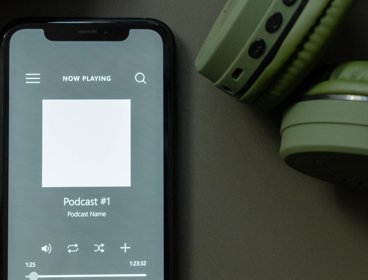By Jen Bagelman and Daniel Jones, Newcastle University
Why geographers love zines?
Zines (rhymes with ‘scenes’) are intimately-crafted and purposefully less glossy than your regular magazine. These small-circulation, self-published works of original and reused texts and images have long existed as a powerful way to share ideas that might not fit neatly within conventional publishing outlets.
In recent years, geographers have taken up zines with great zest. For example, they have been explored as an engaged research method (Hawkins, 2019), a medium for building complex solidarities (Smith, 2020) and a teaching and learning tool in and beyond the classroom (Bagelman & Bagelman, 2016).
This energetic uptake in geography is not surprising. After all, this medium is deeply geographical: creators can bring together diverse bits and pieces to map-out experiences, space, place. It is a tool and a process that allows makers to intervene (with scissors, glue, sparkly pens…) into existing narratives where one might not feel they currently fit. Zines are an opportunity to craft new visceral cartographies layered with story, bursting with life. In these ways, zines are geography in critical and creative practice.
Who can zines reach?
Zines yearn to be picked up. Their hand-crafted often quirky and intimate form whisper: ‘psst: read me.’
The idea with zines is that they really can be made by and designed for anyone. First, and perhaps foremost, they can be an inward-facing medium: a place simply to reflect and process life. They can also be a tool for reaching out more widely. Zines can be designed to connect with public audiences as we saw with the feminist themed-zines emerging from the underground riot grrl movement of the 90s (acknowledging the non-academic roots of zines remains important!). Zines can inform policy-makers (Miewald, 2014). They can bring communities together (Valli, 2021). They can be assigned as essential readings or as a form of course assessment (they are a wonderful break from Turnitin). Zines can be in analogue form (our personal favourite) or digitised to be shared.
Zines in practice (and as process)
Daniel Jones, in his doctoral research, has worked with adults with Tourette Syndrome to co-create zine content as a way of interfering into geographical narratives about public space and interaction. He focussed on the zineing process in workshop settings, rather than the zine as product, and argues that zineing itself is valuable as a mode of communication; it creates unique opportunities for sharing through visual prompts, empowering multiple literacies. The dialogues that form between participants, researchers, and other makers is a generative way of articulating diverse experiences in a relaxed environment and can help forge new solidarities.
Zines emerged in defiance of elite forms of knowledge dissemination. It is worth considering, while zines may be generative for academics, what might be lost when zines move into academic space? We suggest that an ethics of care - foundational to zine cultures - can sometimes fade in academic environments which emphasise speed, metrics and formalised processes which equate risk-assessment with care. If you are an academic considering using zines you might find inspiration from Jones’ approach of working closely with a zine practitioner in co-designing ‘care plans’ which explore how various participants can be supported throughout and even after workshops. In the case of Jones’ work, for example, he considered and adjusted zine workshops to account for the triggering effects of tourettic tics.
The 'To Do' (and do-some-more) of zines
We were asked to reflect on the ‘do’ and ‘do nots’ of zines. There really are only do’s.
-
Do follow an ethics of care (consider how a zine workshop can be inclusive to all). Dive into your creativity. Let yourself express what you’re feeling. Put on some music, experiment and play. Free yourself from the pressure of producing a perfect paper worthy of publication.
-
Do think about who you want to connect with (maybe it’s yourself… maybe its others). Visualise this audience, how will you reach them?
-
Do allow yourself to experiment with different ways of communicating: maybe some poetry? Everyone can do poetry (you can do ‘found poetry’ where you pick up a piece of paper with words already written, like a page from The Guardian. Then cross out the words you don’t want leaving only those words you do want – tada here’s your ‘found’ poem!). Maybe you want to create an image? Remember: everyone has an inner artist (you can cut and paste existing images if you feel safer here. Some of the most powerful collages have been produced by those who claimed ‘I’m not artistic’)
-
If you’re leading a workshop with others, guiding them through zines, all you need to do is grab some source materials (we love raiding a recycling bin for newspapers, magazines). Bring some scissors and glue.
-
And then - most importantly - have fun!
Suggested readings:
-
Bagelman, J., & Bagelman, C. (2016). ZINES: Crafting change and repurposing the neoliberal university. Acme, 15(2), 365–392.
-
Hawkins, H. (2019). Geography’s creative (re)turn: Toward a critical framework. Progress in Human Geography, 43(6), 963–984. https://doi.org/10.1177/0309132518804341
-
Miewald, C and Eugene McCann. 2014. Foodscapes and the geographies of poverty: Sustenance, strategy, and politics in an urban neighborhood. Antipode46(2), 537-556
-
Smith, S. Intimate Geopolitics: Love, Territory, and the Future on India's Northern Threshold. New Brunswick, NJ: Rutgers University Press, 2020.
-
Valli, C. (2021). Participatory dissemination: bridging in-depth interviews, participation, and creative visual methods through Interview-Based Zine-Making (IBZM). Fennia, 199(1), 25–45. https://doi.org/10.11143/FENNIA.99197
How to cite
Bagelman, J. and Jones, D. (2023) Why zines + geography beyond the academy = 💜. Communicating research beyond the academy. Royal Geographical Society (with IBG) Guide. Available at: https://doi.org/10.55203/RYLT9155
About this guide
There’s a long tradition of geographers communicating research ‘beyond the academy’ - to policy, to publics, to young people, to school teachers - whether to recruit students, for career development, critical praxis and activism, or requirements of funders to document ‘impact’. Ten years ago we published the Communicating Geographical Research Beyond the Academy guide. It sought to bring together and share collective experience and learning, from within and beyond the academy. Today, there’s ever more opportunities and modes and media with which to do this. While many of the points made – about audience, about access, about brevity and the use of plain English – still stand, this collection covers these already familiar issues as well as bringing new perspectives to encourage readers to reflect on motives, means and methods and to illuminate examples of good practice.




